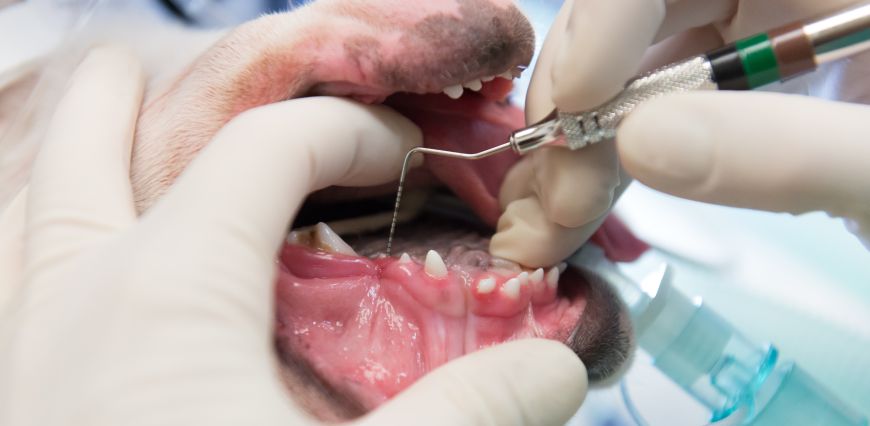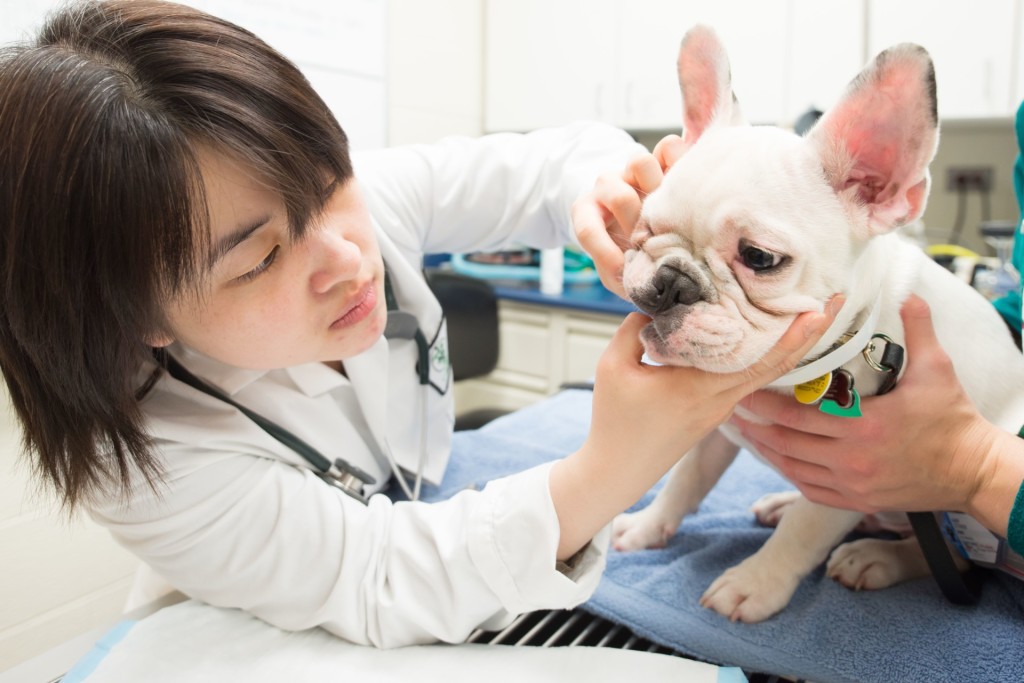
by Dr. Chad Lothamer
February is National Pet Dental Health Month, making this a good time to learn about your companion’s oral health.
Gum disease, or periodontal disease, is the most common dental disease diagnosed and treated by veterinary dentists and general practice veterinarians. In fact, it is considered the most commonly seen disease of dogs and cats more than 3 years old.

Periodontal disease occurs in tissues holding teeth in place, called the periodontium. Chronic periodontitis, the most common form of gum disease, is an inflammatory condition caused by immune response to accumulation of dental plaque.
Plaque, a biofilm that forms on the surface of teeth, is composed of bacteria, polysaccharides, and proteoglycans. If not removed, plaque hardens from minerals in the saliva and becomes calculus or tartar.
As plaque forms along the gums, the body mounts an immune response. This response is so powerful that it can cause inflammation, followed by destruction, of gum tissue. The results of immune response may be:
- Gingivitis, or inflammation and bleeding of gums;
- Halitosis, which is bad breath resulting from bacterial by-products;
- Gum recession and pocketing, meaning loss of tissues that hold teeth in place;
- Movement and loss of teeth; and
- Circulation through the body of bacteria and molecules that trigger inflammation.
The main treatment for gum disease in pets is removal of plaque and calculus, and debridement of inflamed tissues.
Preventing gum disease
Given the potential for problems, human and veterinary dentists alike recommend daily steps to support dental health. Here steps to help prevent gum disease in pets:
- Remove plaque by brushing your pet’s teeth. The American Veterinary Medical Association offers pointers in this video.
- Less effective methods of plaque control include use of specially formulated diets, water additives, and oral rinses.
- Chew toys or treats also can help to remove plaque. But we do not recommend toys made of hard plastic or hard natural tissues, such as bones, antlers, and thick rawhides. These products increase the risk of wearing down or fracturing teeth.
- Do not start brushing your pet’s teeth if gum tissue is already inflamed, as this can be uncomfortable or painful for your pet.

Once calculus has formed on teeth or plaque has formed under the gum line, a professional dental cleaning is required to safely and effectively remove the material.
Cleaning involves use of sharp instruments and the potential for irritation during treatment of inflamed tissue. Professional dental cleaning also involves thorough oral exam and dental radiographs, allowing complete evaluation of tissues of the mouth.
For these reasons, general anesthesia is required to ensure procedures are safe for the pet and the clinician.
If advanced periodontal disease is diagnosed, treatments may be performed to halt progression or to potentially repair or regenerate lost periodontal tissue. Tooth extraction may be recommended if disease has advanced past our ability to effectively maintain a tooth.
After dental procedures are complete, the pet will be recovered from anesthesia and in most cases may go home later that day. After gum tissues have healed, we recommend that pet dental care begin or resume at home.
Even with attentive dental care, plaque and calculus often form in hard-to-reach places, so it is important to have a pet’s oral health periodically evaluated and to have professional cleanings and exams performed.
The practice of veterinary dentistry has grown considerably in the past decade and a half, with an increase in demand from pet owners – and an increase in knowledge and ability among veterinarians interested in dentistry. We are here to provide specialty care that helps pets to live more comfortable and longer lives.
Dr. Chad Lothamer is an assistant professor in Dentistry and Oral Surgery at Colorado State University’s James L. Voss Veterinary Teaching Hospital.